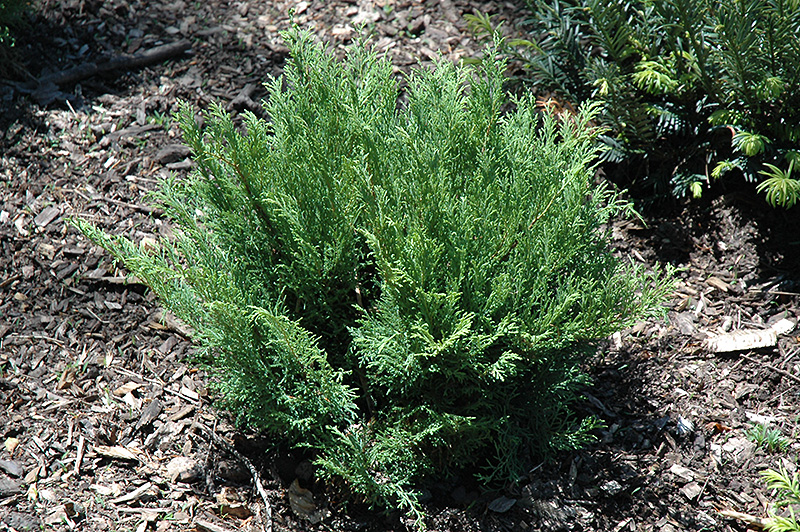12 inches
3 feet


2a
Russian Arborvitae
Jacobsen Siberian Cypress is a dwarf conifer which is primarily valued in the garden for its broadly spreading habit of growth. It has emerald green evergreen foliage. The scale-like sprays of foliage turn an outstanding coppery-bronze in the fall, which persists throughout the winter.
Jacobsen Siberian Cypress is a multi-stemmed evergreen shrub with a ground-hugging habit of growth. Its relatively fine texture sets it apart from other landscape plants with less refined foliage.
This is a relatively low maintenance shrub, and is best pruned in late winter once the threat of extreme cold has passed. It has no significant negative characteristics.
Jacobsen Siberian Cypress is recommended for the following landscape applications;
- Mass Planting
- General Garden Use
- Groundcover
Jacobsen Siberian Cypress will grow to be about 12 inches tall at maturity, with a spread of 3 feet. It tends to fill out right to the ground and therefore doesn't necessarily require facer plants in front. It grows at a slow rate, and under ideal conditions can be expected to live for approximately 30 years.
This shrub does best in full sun to partial shade. It is very adaptable to both dry and moist growing conditions, but will not tolerate any standing water. It is not particular as to soil type or pH. It is quite intolerant of urban pollution, therefore inner city or urban streetside plantings are best avoided, and will benefit from being planted in a relatively sheltered location. Consider applying a thick mulch around the root zone in winter to protect it in exposed locations or colder microclimates. This is a selected variety of a species not originally from North America.
